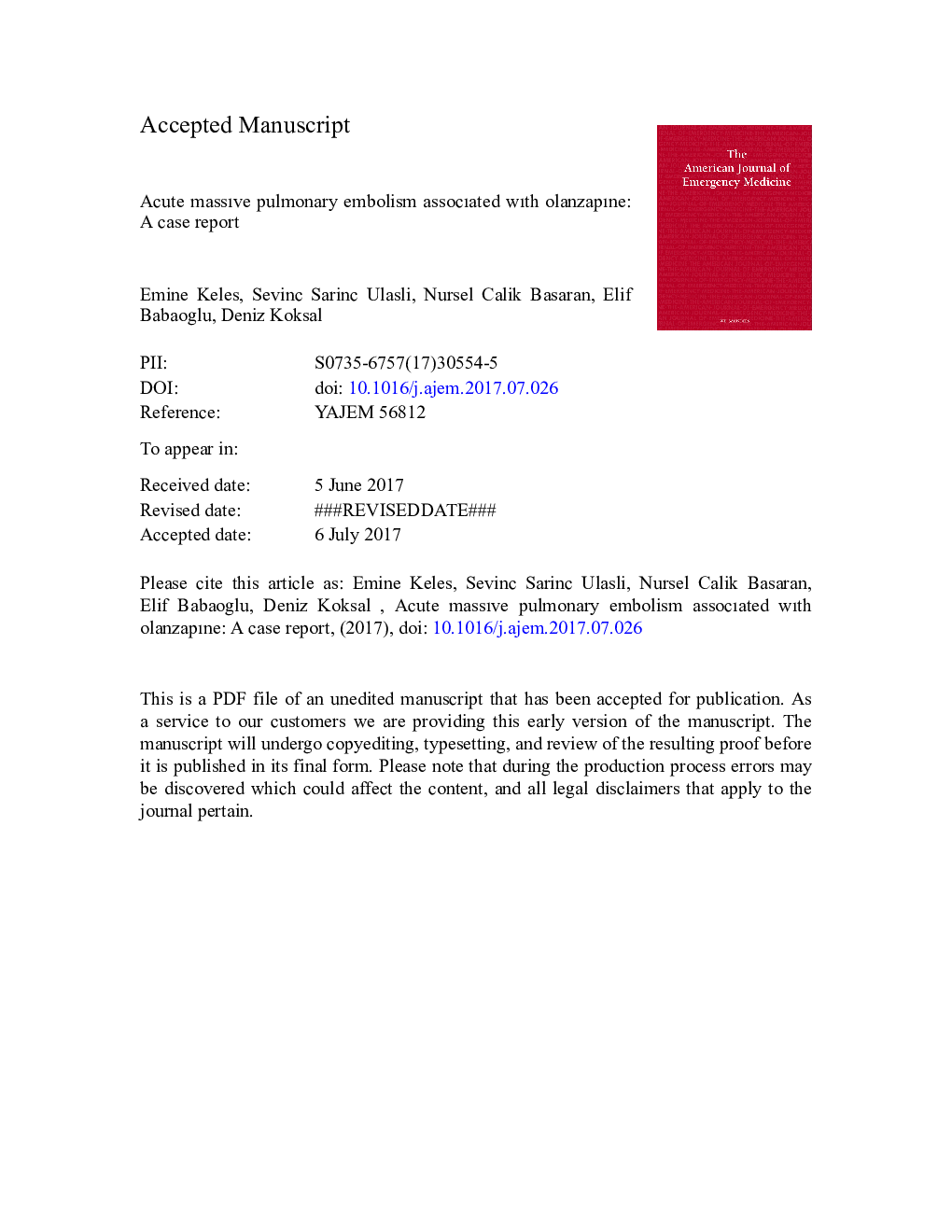| Article ID | Journal | Published Year | Pages | File Type |
|---|---|---|---|---|
| 5650476 | The American Journal of Emergency Medicine | 2017 | 9 Pages |
Abstract
Treatment with low-potency anti-psychotic agents is an important risk factor in the development of pulmonary embolism (PE). We report a case of 74Â years old female patient receiving olanzapine for psychotic depression admitted to the emergency service with the complaints of chest pain and shortness of breath. She had tachypnea, hypotension and tachycardia. Arterial blood gas analysis showed hypoxemia-hypocapnia and D-dimer level was high. Computed tomographic pulmonary angiography (CTPA) demonstrated pulmonary embolism in both main pulmonary arteries, through lobar and segmental branches. Tissue plasminogen activator (t-PA) was administered in intensive care unit. As the only possible risk factor for PE was olanzapine, olanzapine treatment was terminated with pyschiatry consultation. During the 12-month follow-up of the patient; malignancy was not observed. Diagnosis and prevention of PE are the important goals to reduce morbidity and mortality in subjects receiving olanzapine.
Related Topics
Health Sciences
Medicine and Dentistry
Emergency Medicine
Authors
Emine Keles, Sevinc Sarinc Ulasli, Nursel Calik Basaran, Elif Babaoglu, Deniz Koksal,
